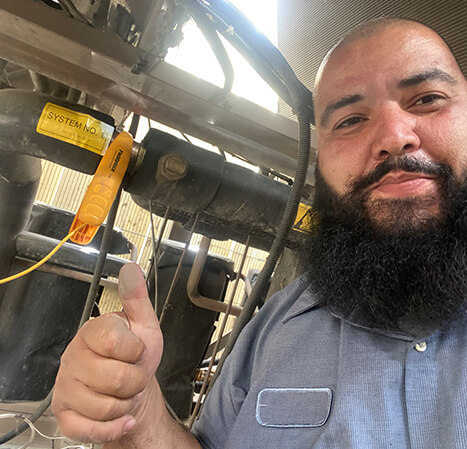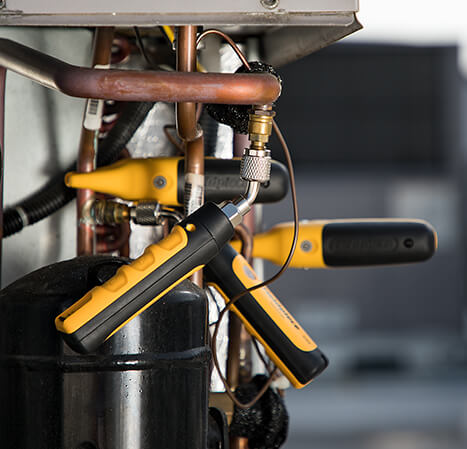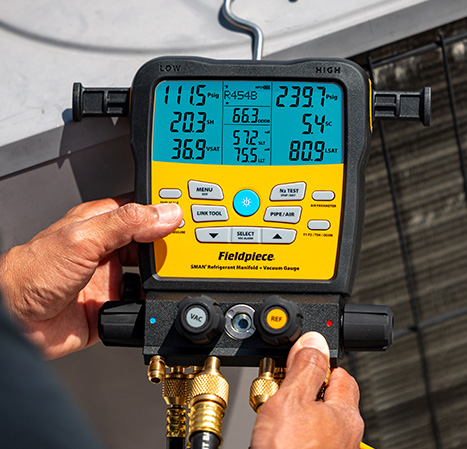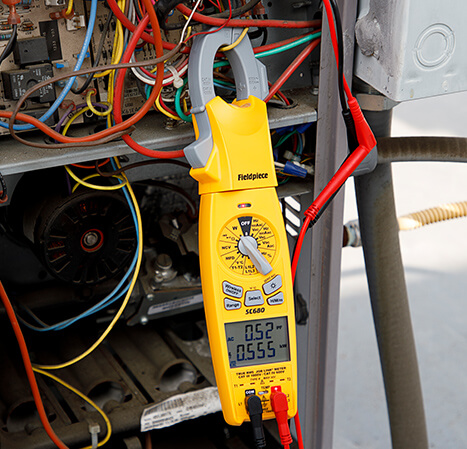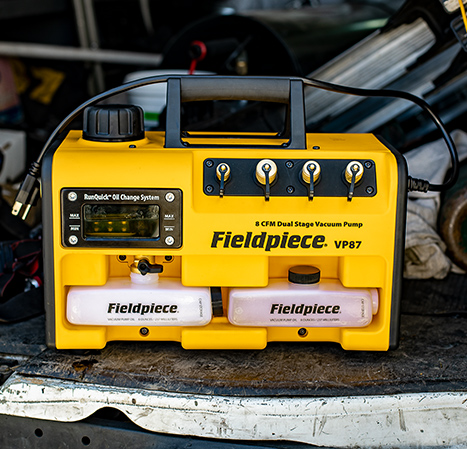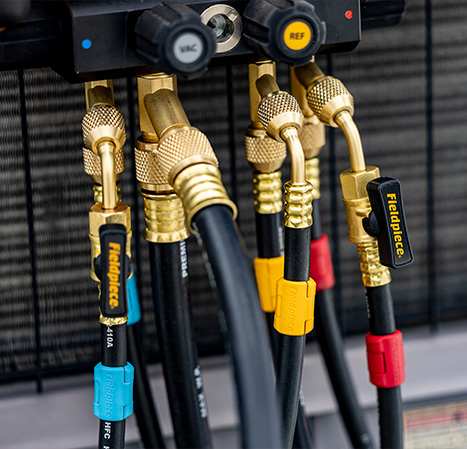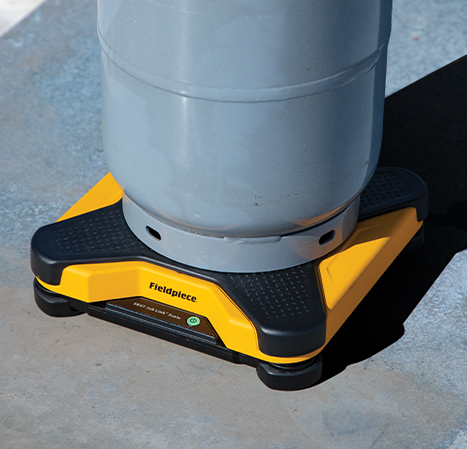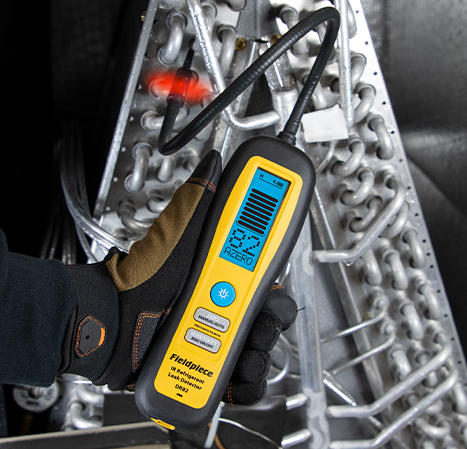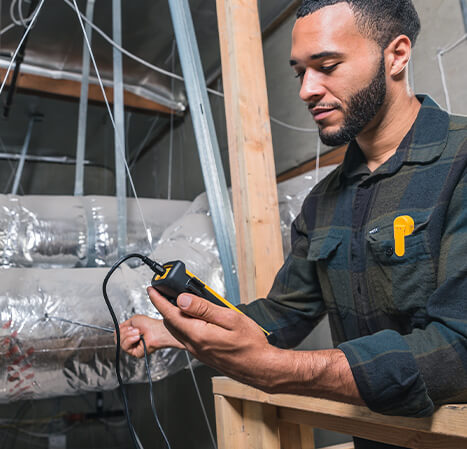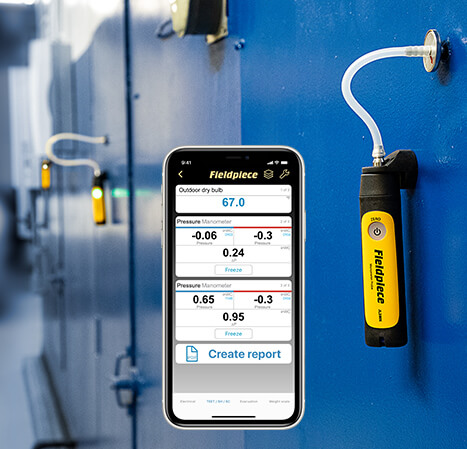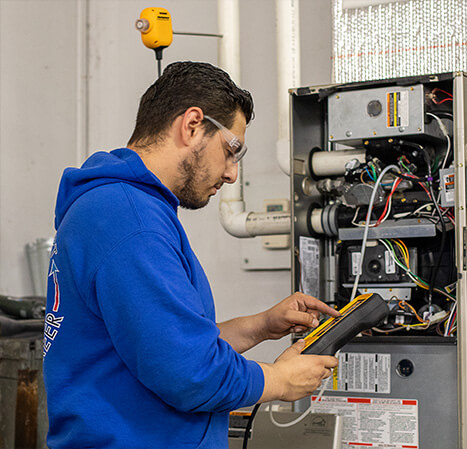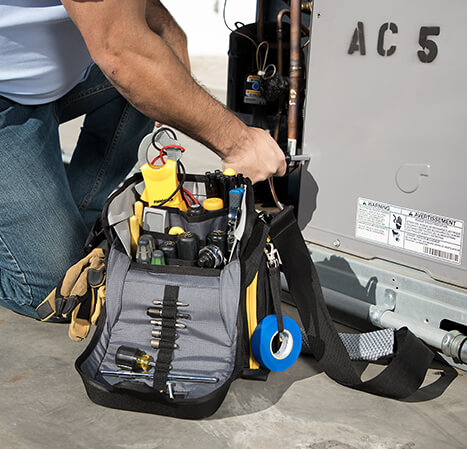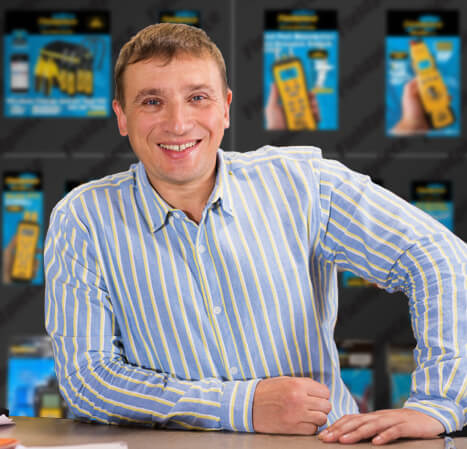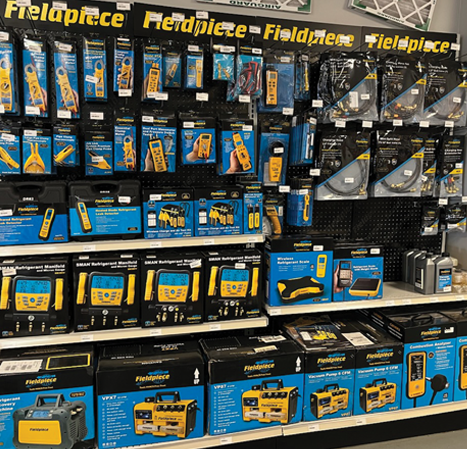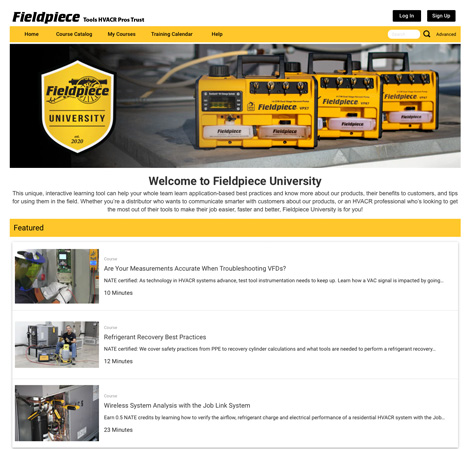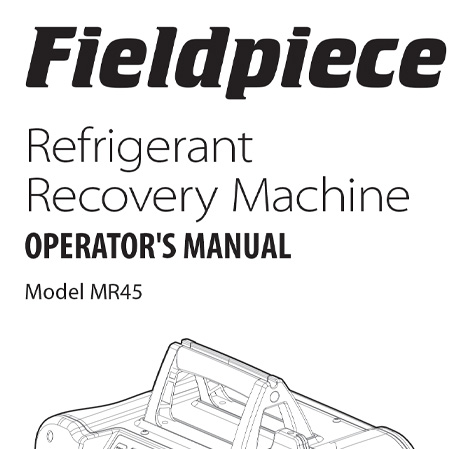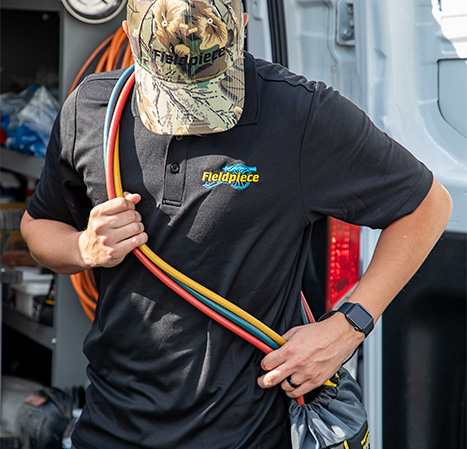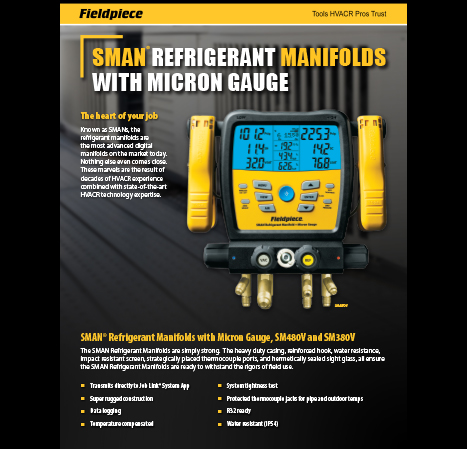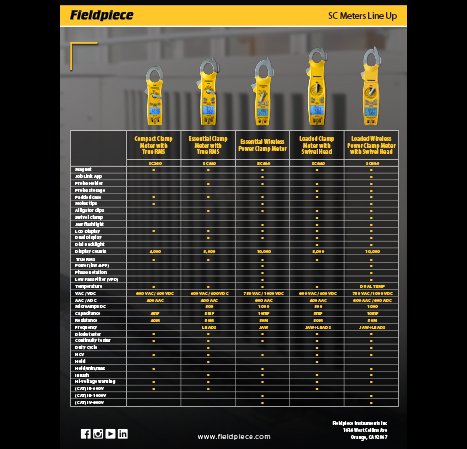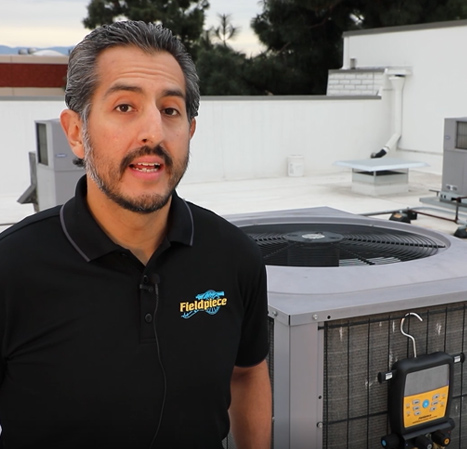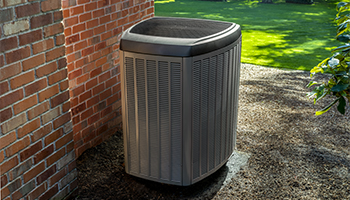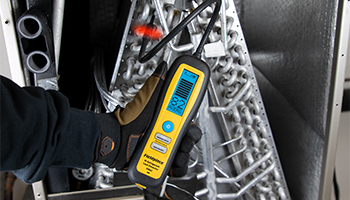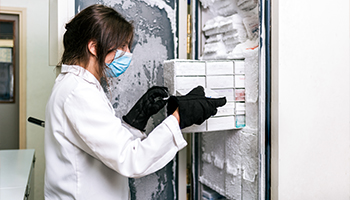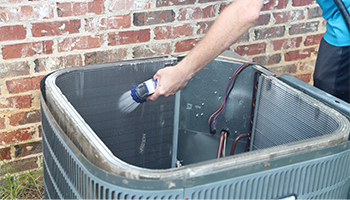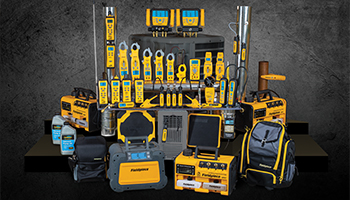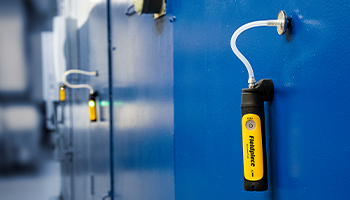HOW REFRIGERANT LEAK DETECTORS WORK
They can now sniff out even the smallest leaks.
Leak detection technology continues to evolve, and new tools are more and more sensitive – capable of finding leaks as small as 1 gram of refrigerant a year. Before diving into what you should look for in a detector, let’s start by talking about what detectors look for. A refrigerant leak detector helps technicians pinpoint leaks in a system. These leaks often happen at miniscule defects in a pipe or fitting. Most imperfections are far too small to see, but gas still escapes through them. Once a leak is found, a decision needs to be made: Can it be repaired? Or should the leaking component be replaced?
Where leaks play hide-and-seek.
Once you have determined that your system is losing refrigerant, you need to find where it’s leaking from. The first tools you can use are your eyes and ears. Start by searching for oil stains or listening for pinhole leaks near weld joints or other connections. For both of these options, you need a well-lit and quiet environment, but that’s rarely the case. Leaks are usually located at Schrader valves, pressure relief valves, soldered joints, threaded fittings, dissimilar metal joints (like copper to aluminum) and valves. If you can’t hear or see anything obvious, it’s time to try another leak detection method like soap bubbles, UV dyes or electronic detectors.
Gas can be blown around.
Isolating the exact location of a leak is difficult since refrigerant leaks are easily affected by other factors. If there are small drafts in the room, temperature swings or even people moving around a lot, those can all affect the flow of air and gas. Also, gas dilutes in the air and can be difficult to discover far from the leak. Refrigerant gas flows downward as it vaporizes and settles. Gas concentration is more erratic the further it is away from the source. That’s why leak detection requires great patience and deliberate, methodical searching.
Soap bubbles and UV dyes can be messy.
Soap bubbles have been used to discover or detect leaks on pipes and fittings for generations. By placing a small amount of liquid soap on a fitting, small bubbles appear if the gas tries to escape through a large enough leak; however, smaller leaks are difficult to find using this method. Plus, this technique creates a mess. UV dyes can also help spot a leak. Place a small amount of UV dye in the system and let it circulate. Then, scan the system with a UV light. Leaks will show as bright spots and are easy to see. Both of these approaches have drawbacks since you need to be able to see the leak to locate it – and in some systems, seeing every side of every fitting is impossible.
Electronic detectors can see everywhere.
The newest refrigerant leak detectors on the market use infrared (IR) or heated diode sensors to find leaks. They aren’t messy like bubbles or UV dyes, and they can immediately sniff out the presence of refrigerant. You no longer need to see the leak to find it, and new advances in technology have made them extremely sensitive to even the smallest leaks.
REFRIGERANT LEAK DETECTOR PAIN POINTS
They’re too sensitive.
The newest technology in leak detectors offers a level of sensitivity that is unprecedented. Unfortunately, since they’re so sensitive, false alarms are now more likely. That’s why it’s important to know what materials could trigger a false positive. Heated diode sensors can sometimes be triggered by commonly found contaminants such as soap bubbles, cleaning solutions, alcohols, oils, fresh paint, large humidity changes and materials that outgas. If you’re leak checking or cleaning a system, be aware of the presence of these contaminants. Some of the best detectors have adjustable sensitivity levels and detect as little as 0.03 oz/yr (1g/a). Those are pretty small leaks.
Some sensors don’t last long enough.
If you choose an ultrasonic detector, you’re going to have a long sensor life. And that’s good. However, these detectors are difficult to use and don’t offer the same sensitivity if the system has low pressure. That’s not good. A heated diode detector is popular because it’s easy to use and reliable. However, the diode does not have a fast recovery time between positive tests, and it will degrade the more refrigerant it’s exposed to. Plus, it’s difficult to tell when the detector is losing sensitivity. An infrared detector is a nice middle ground because their sensors can last up to 10 years – even with consistent, heavy use – as sensitivity does not degrade throughout the sensor lifespan. In other words, an infrared sensor should be as sensitive a few years down the road as it was when it was new. Plus, they are less likely to trigger a false positive and have a quick recovery time since their sensors shine light through passing gas and don’t actually contact the refrigerant. This is especially helpful in contaminated atmospheres.
Battery life and durability is dependent on you.
In a leak detector, portability and durability are important factors. How long the battery can last depends greatly on the technology. A long-life rechargeable battery is a great solution for technicians. They quickly recharge and can often be used while recharging. If you want your tool to last, make sure to treat it with care. These are precision instruments after all. That said, newer tools are designed to handle the rigors of life in the field. It’s important to find a leak detector with a hard case for storage when it isn’t in use – because tossing the detector in the bottom of your bag isn’t the ideal storage solution.
BEEP! BEEP! BEEP! vs. beep. beep. beep.
When your sensor finds refrigerant, how it alerts you is important. Since you use it in locations that could be either indoors or outdoors, or noisy or very dark, make sure to choose a detector that has an audible beep and a screen that is visible in any light condition. Your screen should also show a relative leak size by a numerical value and a bar graph, so you know when you’re close to the exact point of the leak. For more clarity, make sure your tool has a lighted tip so you can clearly see where and what you’re detecting.
 English
English French
French Spanish
Spanish

